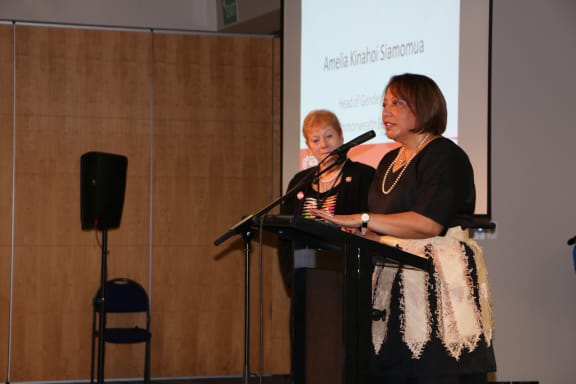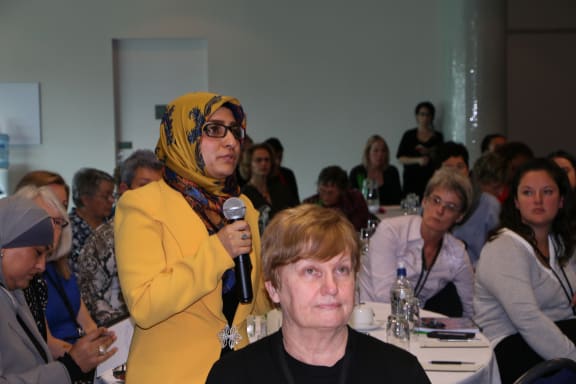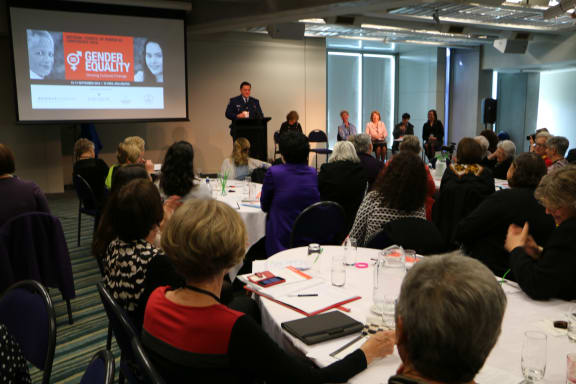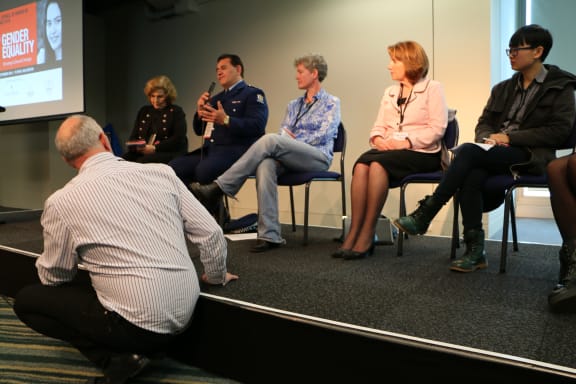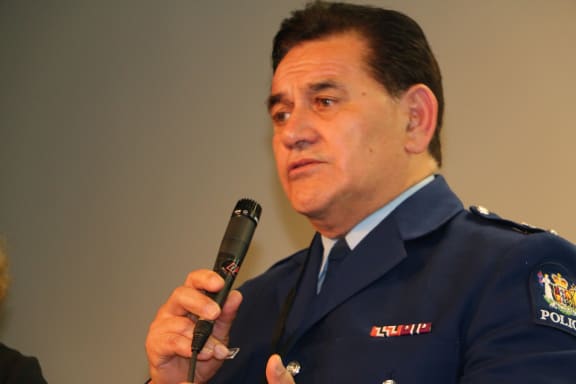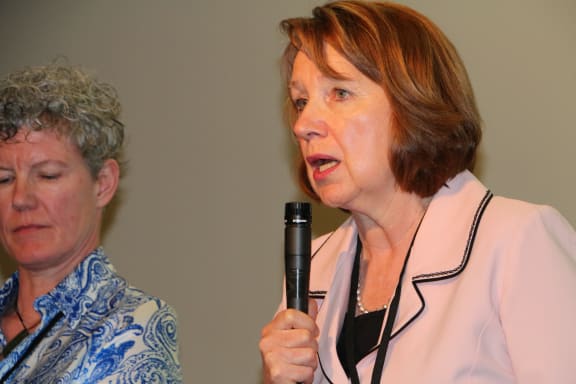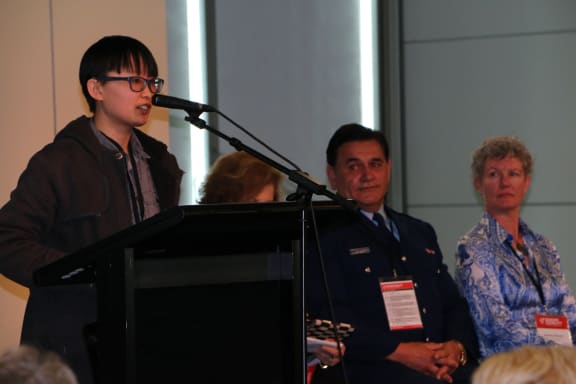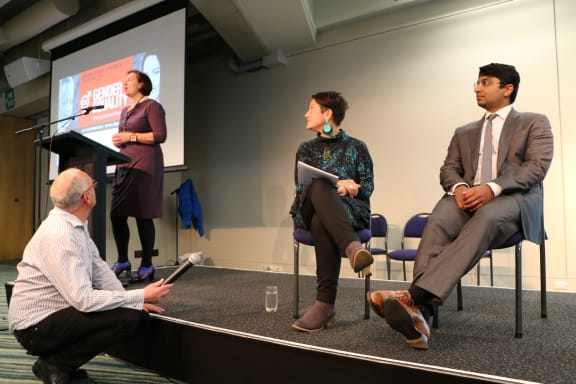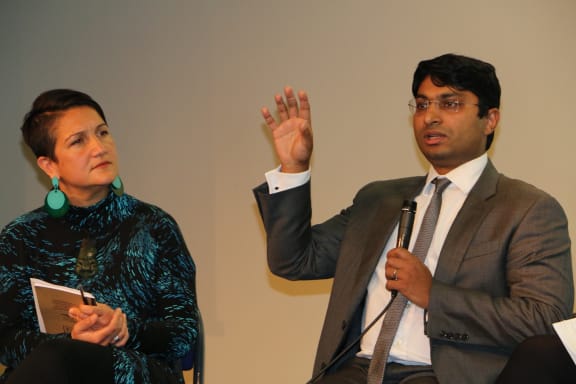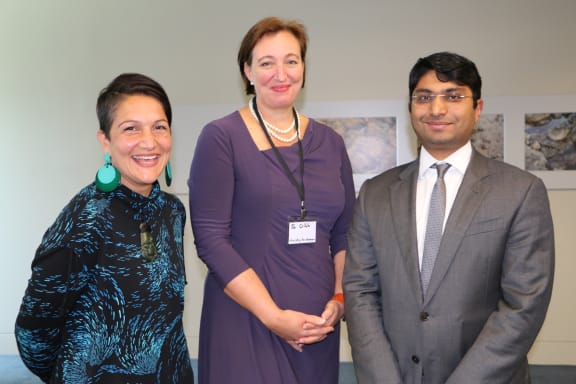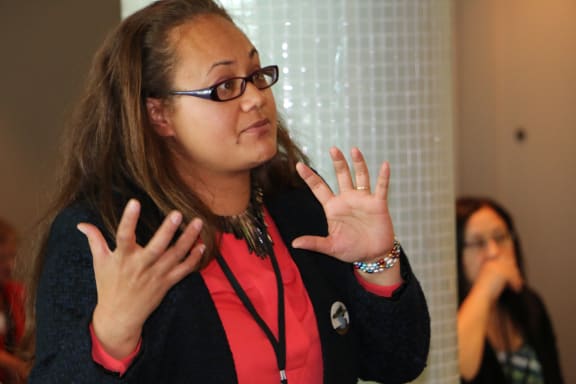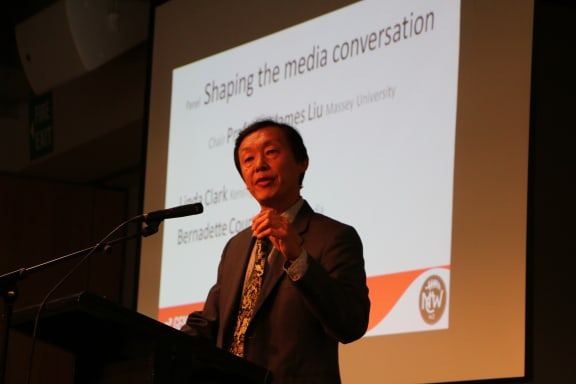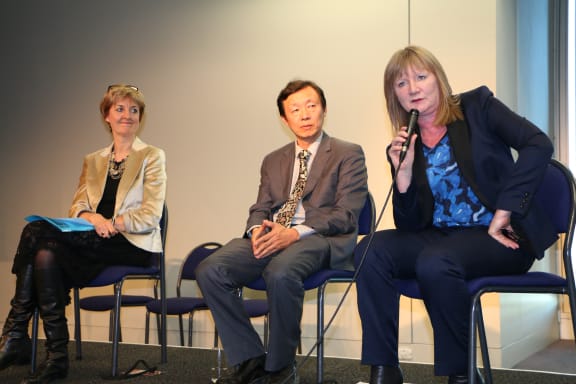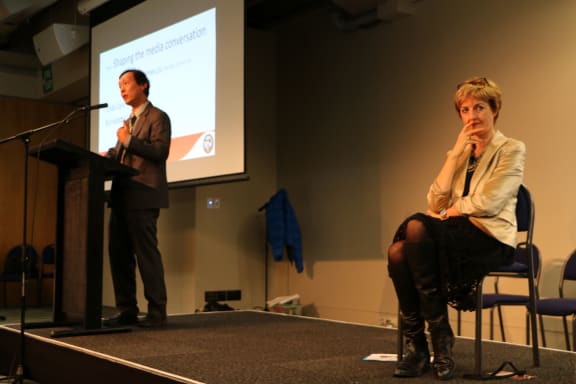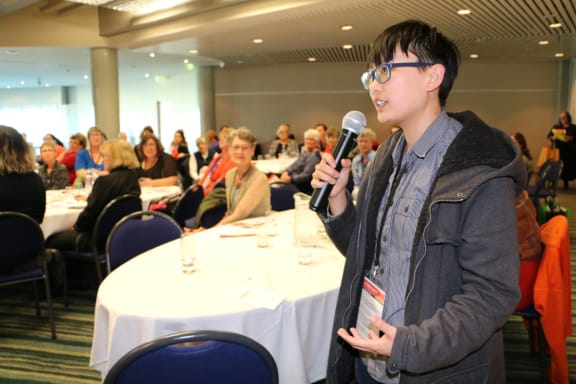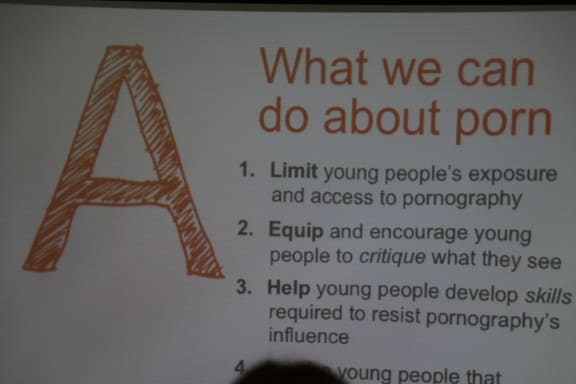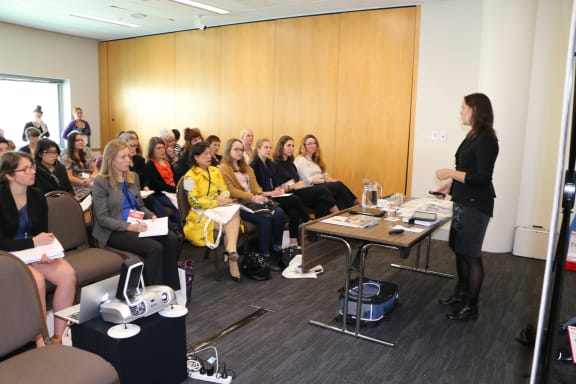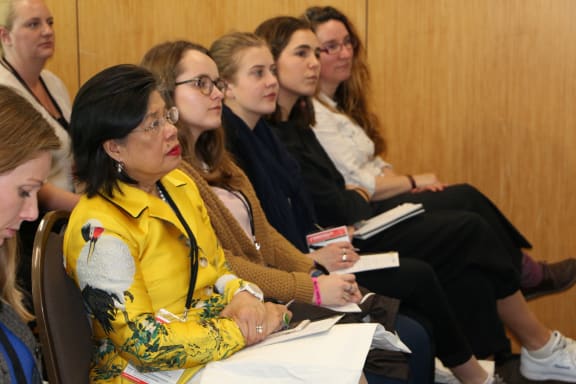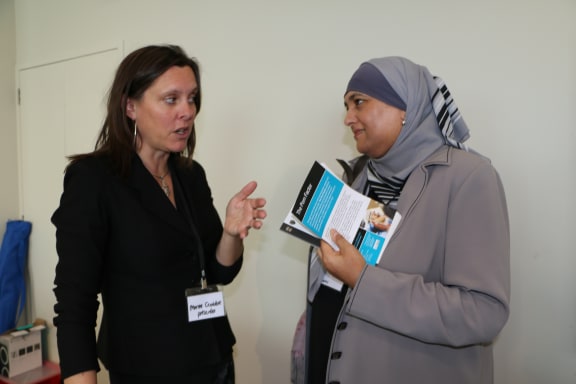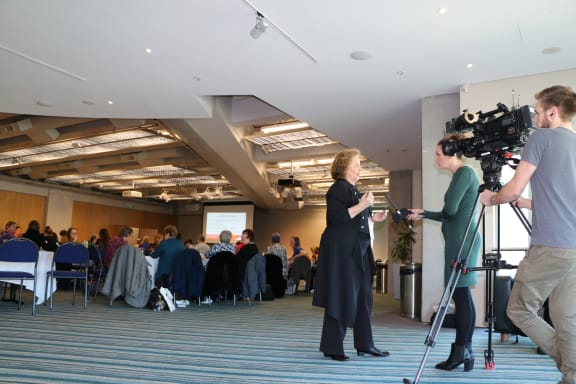"We always talk about equality between men and women ... but are we going to have equality between women [and women]? Like, we are all equal, in terms of leadership?"
This question came from an Afghani woman in the audience and was directed at Amelia Kinahoi Siamomua, Head of Gender Section, of The Commonwealth Secretariat, London. Siamomua is the key note speaker at the national Gender Equality Conference in Wellington, and is focused on driving cultural change. The question for Amelia was pertinent. As a Tongan woman she has experienced inequity first-hand.
"I'm a minority, I'm a migrant myself. I'm Tongan, I migrated to the United States of America. Looking at the diversity of people - the same challenges I face in my adopted home are very similar to the challenges women face here in New Zealand"
Gender inequity is a global issue but how does inequity specifically affect women from our ethnic communities in New Zealand?
Dr Robert Didham from Statistics New Zealand says the statistics for our M & M’s (Minorities within the Minorities) look pretty bleak, especially when it comes to identity of birthplace; "Around 90% of Pasifika children (under 15) are born in NZ – and only Fijians have a lower proportion NZ born (76%). Around ¾ of Asian NZers under 15 were born in NZ – ranging from over 90% for Cambodian children to 50% for Korean and 43% for Filipino children."
On the subject of educational qualifications Dr Didham breaks it down like this; "This is couched in terms of sex ratios (and here I have used the SR that shows the number of females per 100 males – so if the SR is 150 it means that there are 150 females in the group for every 100 males)"
"Maori: for all ages those with bachelor degrees there around 200 females for every 100 males – twice as many females – for post-grad and doctorates this is still high at around 170."
Dr Didham finds the pay inequity issue puzzling, especially given the fact that women from the Pasifika community often have higher qualifications; "Pasifika: as a total it doesn’t look quite as good but still excellent and above what one might expect if we remember that there are more women in tertiary education than men: for the under 30s those with bachelor degrees there around 190 females for every 100 males – still nearly twice as many females – for post-grad and doctorates this is also around 190. What does stand out (remembering that 2/3 of Pasifika are NZ born) is the diversity within the grouping of ethnicities – Tokelauan, Niuean and Cook Island Maori graduates are much more likely to be women. In all cases people with no qualifications are more likely to be male."
When it comes to Asian New Zealanders, Dr Didham the question of diversity "is so important – and also pathways to New Zealand, and migration histories, since a larger proportion are overseas-born than for Pasifika. For example at all ages there are roughly similar numbers of Indian and Chinese male and female graduates. Age matters too because older Indian and Chinese females tend to have no qualifications among the overseas born (not so for the New Zealand born though)."
"Cambodians, especially females, are much less likely to have qualifications beyond the lowest level (there are historical reasons for this) – true too though to a lesser extent for Vietnamese. By contrast Filipino New Zealanders of both sexes are very much more likely to have higher qualifications – there are around 140 women for 100 men in this group but (as a stand-out) among post-graduates there are twice as many women as men. A similar story with Korean women graduates."
"MELAA (Middle Eastern, Latin American and African) – this is a very diverse grouping. Middle Eastern and African women in general are much less likely than their male counterparts to have higher qualifications. Conversely Latin American graduates are more likely to be female."
What about language?
While language can not be overlooked as a contributing factor on equality, Dr Didham points to statistics that show indigenous women doing much better overall than men in regards to keeping their languages alive;
"Most groups have well over 90% English speakers for both men and women. But the great resource and strength is in the retention of other languages and this varies dramatically across the groups with women more likely to report speaking other languages – for Korean 89% of women compared with 87% for men, for Chinese, Indian, and Sri Lankan 69% versus 64%, with a clear indication that populations with high percentages born in NZ are losing their languages (e.g. for Niuean 27% males and 31% females)."
Dr Didham says that overall these kinds of statistics are damning:
"Unfortunately mostly this only reinforces what the others have pointed to – despite the strength [of ethnic women] in cultural, linguistic and educational areas, inequality remains an issue."
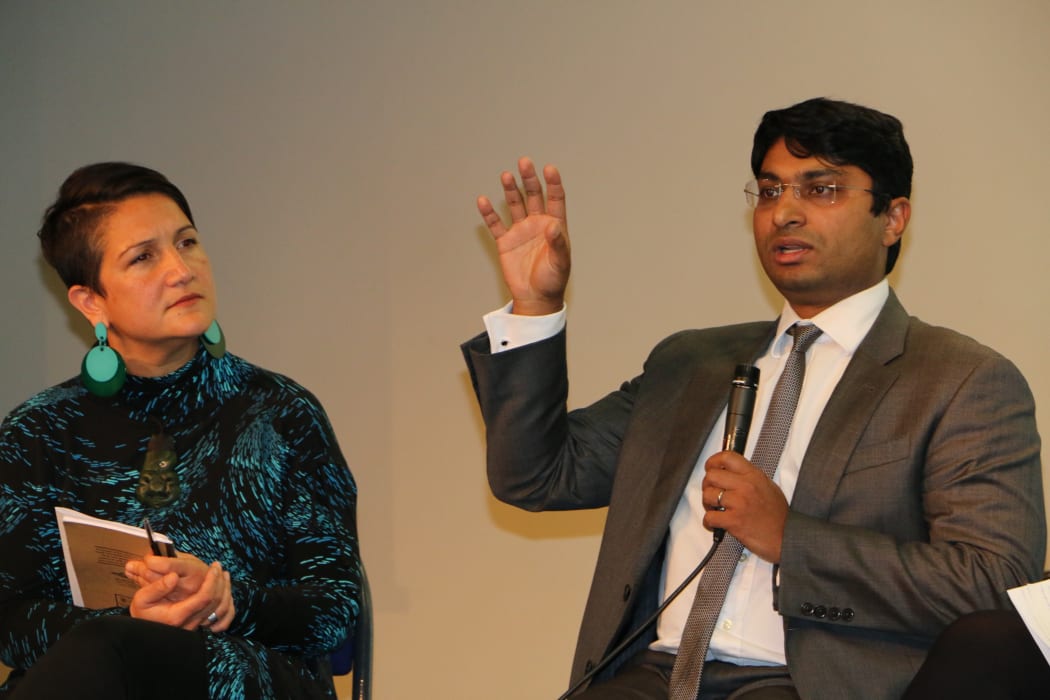
Economist Shamubeel Eaqub: Equal pay? Not for women of colour Photo: RNZ / Lynda Chanwai-Earle
On pay inequity:
In New Zealand women’s average weekly wage is around $879.09 while men's is $1058.98 – a gender pay gap of 17%. One year after entering employment the average income gap between men and women with a bachelor’s qualification or equivalent was around 6%. while after five years (2002-2006) it had soared to 17%. This suggest that it is not just child-raising issues that mean women are paid badly.

Equal pay graphic by The Tertiary Education Union of NZ and Statistics NZ Photo: The Tertiary Education Union of NZ
But it's worse for our women of colour:
The Tertiary Education Union around June this year found that Pakeha women on average earn 84% of that of Pakeha men, Asian women 77%, Maori women 72% and Pasifika women at the lowest, earn only 67% of the average Pakeha man in our country.
At the conference Dr Jo Cribb (Chief Executive at the Ministry for Women) chaired a seminar called “Change is inevitable but growth is intentional” with Anya Satyanand, Executive Officer Ara Taiohi and economist and commentator Shamubeel Eaqub.
Eaqub believes sexism is institutionalised across our country, from the top down in governance and public policy. "It's still stale, male and pale dominated business community, or in politics or in public policy. When it comes to women of colour in particular, they do face discrimination but also they're starting from cultural backgrounds that are different."
Some say women don't negotiate hard enough when it comes to pay equity. Shamubeel rejects this as outrageous.
"The system is stacked, and the system is discriminatory. There are more men in positions of power and they discriminate. There is this uneven playing field. We need to have a public policy solution that evens this out by force. [So positive discrimination?] Absolutely."
The impact of pay inequity:
What impact does pay inequity have on women and children from our ethnic communities? New Zealand’s first ever national severe housing deprivation (or homelessness) census took place a decade ago in 2006. It found 34,000 identifying as deprived, with people aged younger than 25 making up over half the numbers.
Statistics New Zealand data from 2006 also showed the most severely crowded households by ethnic group being Pacifica 51.4% and MELAA, before Maori, Asian and finally European. These groups were living predominantly in Manukau City, Porirua and Hamilton.
According to the University of Otago, which analysed the latest census data from 2013, more than 40,000 people are now homeless. This includes those living rough, in emergency housing or living in substandard garages.
Dr Didham tells me that given our changing demographics (with the largest populations from our ethnic communities living in the Auckland region), the disproportionate burden of over-crowding, severe housing deprivation and associated public health issues fall most heavily on women and children in our ethnic communities.
Summing up:
The instigators behind the Gender Equality Conference include Indian New Zealander Vanisa Dhiru (Vice President, The National Council of Women of NZ). Vanisa tells there are definite discrepancies between white women and women of colour and there’s work to be done.
"What we want to be seeing at The National Council of Women is that it is equal pay for equal work."
"We are focused on a gender-equal New Zealand. We need to move quite quickly to ensure we have gender equality amongst other things, where men may not be doing do well. We need to build New Zealand as a great place to be for our children."
